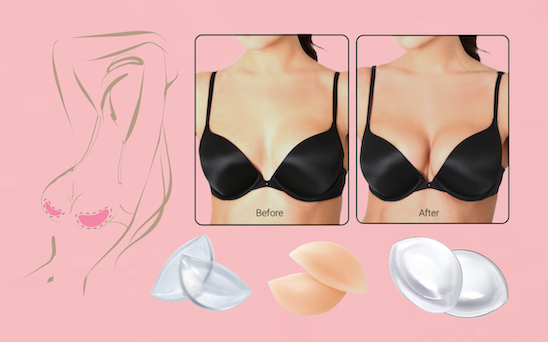
Every summer we’re reminded to protect our skin from the sun by wearing sunscreen. Especially as women, we’re told to wear sunscreen all year round to prevent age spots and wrinkles. But what if the sunscreen you’re wearing is doing more harm than good? Have you ever wondered how sunscreens actually work and what ingredients are in them? In this post I’ll break it down for you, so when you’re picking your sunscreen for this summer, you’ll know which one to go for and which ones to avoid.
The sun
The sun have been blamed for a plethora of our beauty woes like wrinkles and age spots. There are of course valid reasons, as over exposure to the sun can be detrimental for our skin, but it certainly shouldn’t be an all or nothing approach.
Our body needs the sun to convert cholesterol in our bodies to vitamin D. Which is crucial for the absorption of calcium, our bone health, our mood and our immune system. How it occurs is when the sunlight in the form of UVB rays touches our skin and activate our body’s production of vitamin D. And if we’re not getting adequate sun on our skin, deficiency of vitamin D can cause a variety of diseases and even weight gain.
Appropriate sun exposure has been shown to prevent a number of diseases including skin cancer. Whereas studies show indoor workers who are exposed to artificial fluorescent light everyday as well as choosing to avoid the sun are more prone to get diseases.
How to get the most out of the sun
This doesn’t mean to lay under the sun all day long – there is a right way to do it. It is advised to start exposing our skin in spring. As melanin (the tanned skin pigment) which is produced in spring can prevent sunburn by the time summer comes around. And it’s important to start slow and build your way up with how much time you’re exposing your skin to the sun. Start with 3-5 minutes and work your way up so your skin can adapt. You get the sun’s benefit by only being under it for 15 minutes per day.
The best time to get some sun on your skin is early morning to around 10:30, this depends on where you are, your skin and your skin pigmentation. You want to bare as much skin as possible to get the maximum benefit. When your skin starts to feel warm, that’s when it’s time to seek shade.
It is highly recommended to stay out of the sun during its most intense hours. If you can’t, wear a large hat and wear clothes that are airy and covers you up.
You may be wondering why I haven’t recommended sunscreens (especially commercial ones) as an option for sun protection, here’s why.
The problem with commercial sunscreens
What sunscreen does is it prevents sunburn. It blocks UVB rays which is the ray that causes sunburn. It ultimately disables our skin’s protective mechanism (a sunburn) which warns us that we’ve been in the sun for too long.
Sunscreen separates UVA rays from UVB. So sunscreens absorb most of the UVB rays but lets most of the UVA rays through. Studies have found isolated UVA rays actually cause more skin damage than UVB (which causes sunburn). Not only that but sunscreens block our vitamin D production because it is UVB that creates vitamin D in our bodies.
Not only does it tamper with our vitamin D production, but by slathering ourselves with commercial sunscreens, we’re essentially baking chemicals from the sunscreen into our skin. Many of the chemicals used in commercial sunscreens are free radical ingredients like oxybenzone. The surprising thing about it is, it is anti-carcinogenic until it is exposed to sunlight! Not to mention since they are packed with synthetic ingredients, they have the potential to mess with our hormones and can accumulate in our fat tissue.
Furthermore by using commercial sunscreen, it creates a false sense of security, because it is giving us an illusion that our skin is protected from the sun because we didn’t get a sunburn. But our sunburn is what keeps us from over exposing our skin to the sun. And if we bypass this, we’re unknowingly exposing our skin to UV radiation.
Studies have found sunburns are actually easier for our bodies to process than dealing with the sun damage of being in the sun with sunscreen on.
To unsure that you’re choosing a safer sunscreen this summer, here is a list of chemicals that are typically found in commercial sunscreens that you’d want to avoid.
Chemicals to avoid
OXYBENZONE (BENZOPHENONE-3 / BP-3)
- Increases production of DNA damaging free radicals when exposed to light.
- Hormone Disruptor
OCTINOXATE (OCTY-METHOXYCINNAMATE)
- Studies have found when it is exposed to sunlight, it degrades into a product with less UV-absorbing ability. Increases production of DNA damaging free radicals when exposed to light. The damage could continue even after our skin is out of the sun.
- Hormone Disruptor
PABA
- Increases production of DNA damaging free radicals when exposed to light.
HOMOSALATE
- Hormone Disruptor
- May enhance the amount of pesticides we absorb through our skin.
OCTOCRYLENE
- Increases production of DNA damaging free radicals when exposed to light. Free radical damages our skin and increases the risk of premature ageing and skin cancer.
- A study found that when a sunscreen is used that contains octocrylene, octylmethoxycinnamate, and oxybenzone, when exposed to sun for about 20 minutes, it increased the generation of free radicals. And after 60 minutes, it raised levels of free radicals higher than if we weren’t wearing any sunscreen at all!
OCTISALATE
- Octisalate degrades quickly when exposed to sunlight so it is unlikely to add much protection.
- It can increase the absorption of other hazardous ingredients into our skin. It can drive these ingredients deeper into our skin and body.
AVOBENZONE
- Unstable, it can break down into unknown chemicals once it is applied onto our skin.
- It reacts with octinoxate, which destructs both chemicals.
- Increases skin irritation and damage.
To find out more about chemicals in sunscreens, click here.
Environmental consequences
Another important factor to consider about commercial sunscreens is their impact on our oceans, especially our coral reefs, it has been shown to bleach them. Hawaii and Palau have banned the use of harmful sunscreens that contain oxybenzone and octinoxate (these are 2 popular ingredients in commercial sunscreens).
Natural SPF
It has been found that sun damage can be reduced by eating a more nutritious diet and avoiding processed food as much as possible. Things like trans fat, plastics, colouring and flavour additives like MSG creates reactions in our bodies that trigger collagen breakdown, age spots and hyperpigmentation.
By feeding our body water rich fruits and veggies along with making sure the water we’re drinking is clean and free of heavy metals, we can strengthen our skin cells. Which can help it respond better to sunlight. We can actually create an internal SPF with foods rich in antioxidant, such as lycopene rich red fruits and veggies: watermelon, berries, tomatoes and red peppers are especially beneficial.
Green Sunscreens
When choosing a green sunscreen, we want to use one with zinc oxide. Uncoated zinc oxide creates a physical barrier against the sun’s rays. Even with green sunscreens, try to avoid spray-on ones as they are too easily inhaled. And sprays can spray a large amount of the product onto the sand which then gets washed into our oceans. Lotions and oils are best.
When choosing beauty/skin products, Content Beauty is the best place to go if you’re in the UK. And Cap Beauty or The Detox Market is the best if you’re in the US.
Natural sunburn remedies
You may think coconut oil would be a good remedy for sunburns as it has been touted as a do-it-all product. But since oil attracts heat, it is recommended to avoid oils for sunburn. Instead choose fresh aloe vera if you can get it. It is such a great plant to have around as not only does it soothe sunburns but it’s great for any other burns, it’s also amazing for hydrating your skin. Otherwise find a product that uses 100% aloe vera. You could add a drop of organic peppermint essential oil to it which could provide extra relief.
At the end of the day, it’s all about being responsible with the sun. We need the sun to thrive. Not only does it help us with boosting our vitamin D levels, but it also enhances our immune system, alleviates depression and balances our hormones. It’s also naturally antiseptic which can help clear up skin issues like acne, eczema and psoriasis. All you need is 10-15 minutes a day of direct sunlight to reap its benefits. But there is such a thing as too much, so make sure you’re covered when the sun is most intense and get out of the sun at appropriate times so you don’t get a sunburn.
Vanessa is a Wellness advisor, a certified Naturopath and Naturopathic Nutritionist. Find Vanessa at @spaceofwell or on spaceofwell.com.

